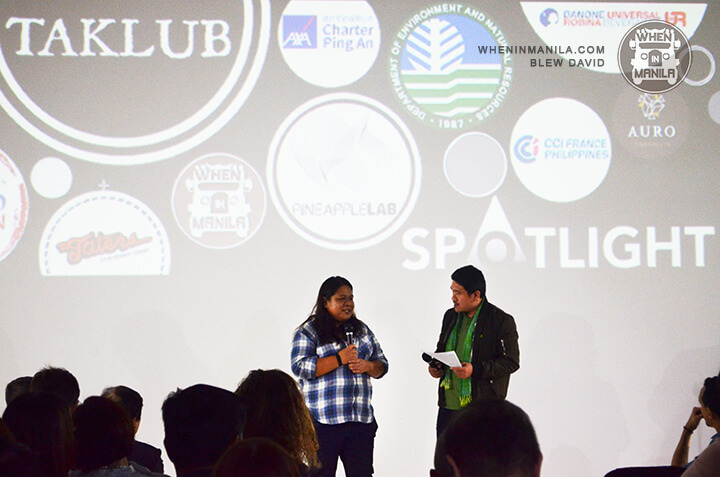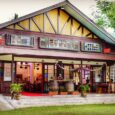Given the negative effects brought about by climate change all over the world, people from all walks of life are pitching in to spread information about it or help find solutions or both. Anyone from legislators and environmentalists to scientists and scriptwriters are sending their message across through their craft or line of work.
At the recently held 1st Climate Change Awareness Night at Pineapple Lab organized by France-Philippines United Action (FPUA) Foundation and Spotlight, I had the opportunity to talk about climate change with scientist Oscar Lizardo of Project Noah and scriptwriter Honeylyn Joy Alipio.
Alipio is the scriptwriter of Brillante Mendoza’s film “Taklub”, which was shown during the event. It shows snippets of the devastation caused by super typhoon Haiyan to the people in Tacloban. Haiyan (known locally as Typhoon Yolanda) hit the Philippines in November 2013, four years ago.
The movie centered on the lives of three characters: Bebeth (portrayed by Nora Aunor), a mother who lost her three children and is in search for their remains, Larry (Julio Diaz), who lost his wife and consoles himself by joining the activities of devout Catholics, and Erwin (Aaron Rivera), who lost his parents and is trying to rebuild a new life with his brother and sister.

The narrative was effectively stitched together by Alipio’s build-up of the three main characters, which she said exemplify the various coping mechanisms of people: emotional (Bebeth/Nora), physical (Erwin/Aaron), and spiritual (Larry/Julio). That is also what distinguishes Alipio’s scriptwriting. Her technique is based from the “Found Story” approach or concept of acclaimed writer Armando “Bing” Lao, through whom Mendoza and Alipio got to collaborate on Taklub. She successfully finished the workshop of Lao, which was one of the requirements of Mendoza, who also uses the “found story” approach in most of his award-winning films.
So how is “found story” different from the approach used in documentary films?
Alipio explains: “As Bing Lao says, it is most suited for the Philippine culture because there are Western psyches that are really different from us. The narrative is based on real life events and the characters are socialized. Unlike in documentaries which are straightforward and you cannot insert your own voice as writer or director…you cannot meddle. In a found story narrative, you can insert your own predictions or assertions”.
What did she “insert” in Taklub?
Alipio said it is the analogy in the scene that amidst the rubble of the typhoon devastation, reconstruction of houses, roads etc., the House of God (the church) also needs to be rebuilt. She said, “God was also doing reconstruction”. And of course the use of the three elements in the ensuing tragedies: water (tsunami), fire (the fire that damaged the tent of one family of survivors), and earth (the landslide).
–




